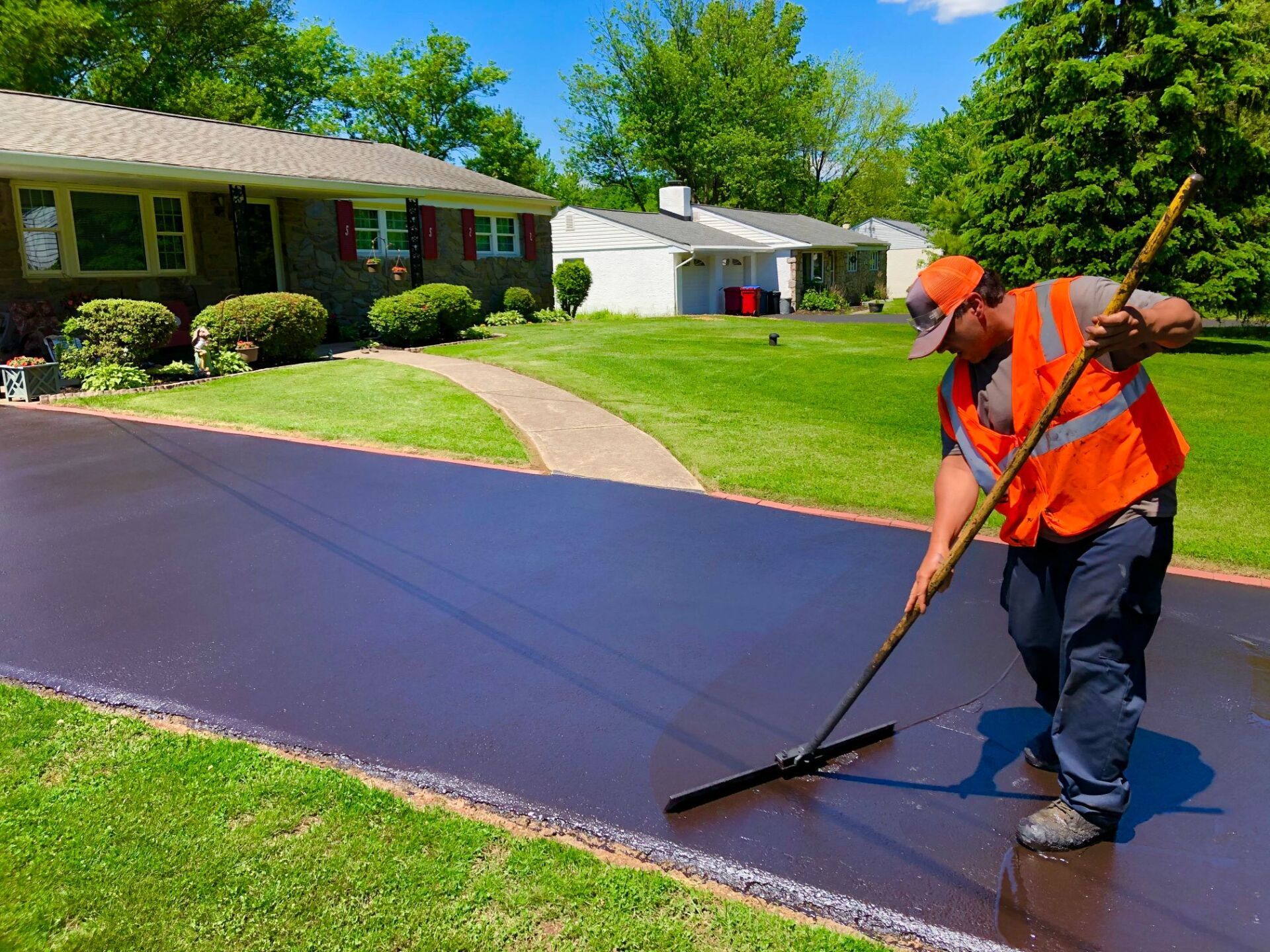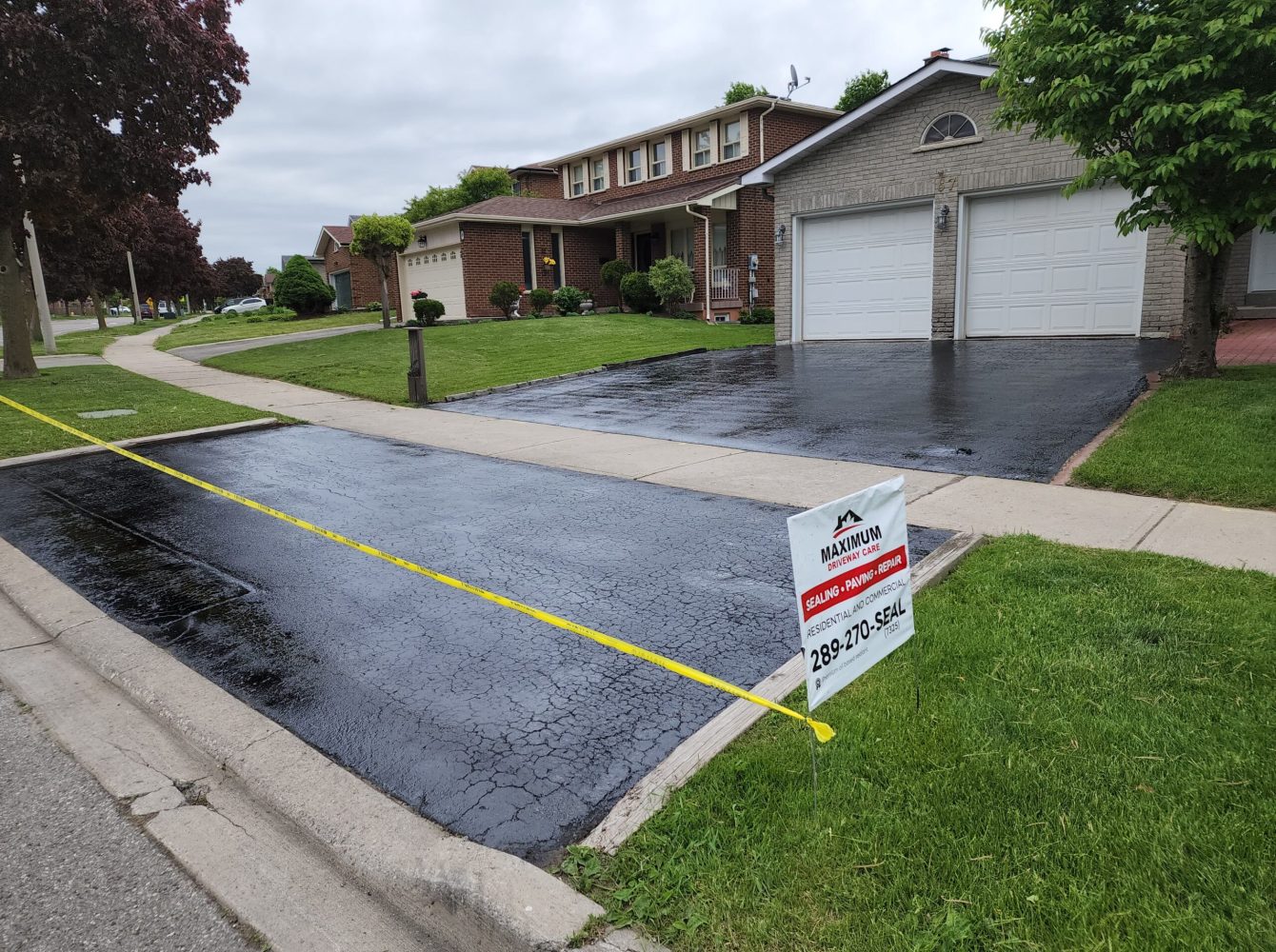Maximize Investment Returns: Angled Parking Area Excellence with Asphalt Sealing
Maximize Investment Returns: Angled Parking Area Excellence with Asphalt Sealing
Blog Article
Warm Mix Asphalt: A Lasting Solution for Pavement
Warm Mix Asphalt (HMA) has become a leading sustainable choice for pavement remedies, supplying a myriad of environmental benefits and cutting-edge modern technologies. Its capacity to decrease and reuse materials power consumption provides an engaging instance for its adoption in roadway construction tasks. Moreover, the long-term performance and resilience of HMA make it a recommended choice for facilities development. As the demand for environment-friendly building practices expands, exploring the nuances of HMA's sustainability can supply useful insights into the future of sidewalk solutions.
Environmental Benefits of Warm Mix Asphalt

Furthermore, Warm Mix Asphalt helps to reduce metropolitan warm island effects. Its dark shade absorbs sunlight, reducing the quantity of warm reflected back into the ambience compared to lighter-colored pavements. This can lower ambient temperature levels in metropolitan locations, reducing the demand for air conditioning and eventually reducing energy intake.
On top of that, Warm Mix Asphalt adds to enhanced stormwater administration. Its permeable nature permits water to infiltrate the pavement and recharge groundwater materials, lowering drainage and the danger of flooding. These ecological advantages make Warm Mix Asphalt a lasting choice for paving highways and roads.
Power Efficiency in HMA Production
Is energy performance an essential aspect in the production of Hot Mix Asphalt (HMA)? Power plays a significant duty in the production of HMA, impacting both price and ecological sustainability. One essential facet of power efficiency in HMA manufacturing is the use of cozy mix asphalt (WMA) innovations.
Additionally, developments in plant technologies have actually caused more energy-efficient HMA manufacturing processes. Modern plants are made with attributes like recycled asphalt pavement (RAP) handling abilities, reliable burner systems, and enhanced insulation, all adding to energy financial savings. By enhancing power usage in HMA manufacturing, the market can lower its carbon footprint while keeping premium sidewalk materials. Power efficiency is, as a result, an important factor to consider in guaranteeing the sustainability of Warm Mix Asphalt production.
Recyclability of Warm Mix Asphalt
The recyclability of Hot Mix Asphalt (HMA) is a critical facet of its sustainability and lasting environmental impact. HMA is among one of the most recycled products in the United States, with over 100 million lots of redeemed asphalt sidewalk (RAP) being recycled annually in new pavement building. Reusing HMA offers numerous environmental advantages, such as reducing the demand for virgin products, lowering energy consumption throughout manufacturing, and lowering the quantity of waste sent out to land fills.
The process of recycling HMA includes grating the existing sidewalk, squashing it right into smaller sized pieces, and mixing it with new aggregate and asphalt binder to create a recycled mix. This recycled mix can frequently do along with or perhaps far better than conventional HMA, while requiring fewer basic materials and creating lower greenhouse gas discharges. By integrating RAP into brand-new pavement jobs, road agencies can conserve natural deposits, reduce costs, and decrease the ecological impact of road building and construction and upkeep tasks. Generally, the recyclability of HMA plays a considerable function in promoting sustainable practices within the sidewalk sector.

Long-Term Efficiency of HMA
Asphalt pavements show durability and durability over a prolonged duration, reflecting the lasting efficiency of Warm Mix Asphalt (HMA) The durability of HMA can be associated to its ability to hold up against heavy website traffic tons, extreme climate condition, and the impacts of aging. Research studies have revealed that well-designed and appropriately created HMA pavements can last for two decades or even more with routine maintenance. The key to maximizing the long-term performance of HMA hinges on using top quality materials, adhering to ideal techniques in construction, and implementing reliable maintenance techniques. Proper drainage, routine inspections, and prompt repairs are vital for preserving the architectural integrity of HMA sidewalks in time. Additionally, innovations in HMA modern technology, such as making use of polymer-modified binders and cozy mix asphalt, have actually even more enhanced the longevity and durability of HMA pavements. By focusing on high quality construction and upkeep techniques, HMA continues to show itself as a sustainable and cost-effective service for lasting sidewalk infrastructure.

HMA: Durability and Sustainability
Showing both sturdiness and sustainability, Hot Mix Asphalt (HMA) has actually become a foundation in the building of resilient sidewalk frameworks - angled parking. HMA's durability comes from its capacity to see here now stand up to heavy loads, harsh climate condition, and high website traffic quantities, making it a reliable choice for highways, highways, and airport terminal runways. The structure of HMA, which generally consists of accumulations, binder, and filler, plays a vital role in improving its long life and resistance to tear and use
In addition, HMA's sustainability lies in its recyclability and discover here energy-efficient manufacturing procedure. The ability to reuse redeemed asphalt pavement (RAP) in brand-new HMA mixtures decreases the need for virgin products and minimizes the environmental effect of sidewalk construction and upkeep. Furthermore, the energy performance of generating HMA hinges on its lower mixing temperature levels contrasted to various other pavement materials, causing lowered power consumption and greenhouse gas emissions.
Conclusion
In conclusion, hot mix asphalt (HMA) uses a sustainable remedy for pavement with its ecologically friendly features. HMA's recyclability, power effectiveness in manufacturing, and lasting longevity make it a green option for road construction.
HMA is one of the most recycled products in the United States, with over 100 million lots of recovered asphalt pavement (RAP) being recycled yearly in brand-new pavement building and construction.The process of recycling HMA involves crushing the existing pavement, squashing it into smaller sized items, and blending it with new accumulation and asphalt binder to produce a recycled mix.Asphalt sidewalks demonstrate resilience and durability over a prolonged duration, showing the long-term performance of Warm Mix Asphalt (HMA) Furthermore, important source developments in HMA technology, such as the usage of polymer-modified binders and cozy mix asphalt, have better enhanced the longevity and durability of HMA pavements. The capacity to reuse recovered asphalt sidewalk (RAP) in new HMA blends reduces the need for virgin materials and lessens the ecological impact of sidewalk building and construction and maintenance.
Report this page